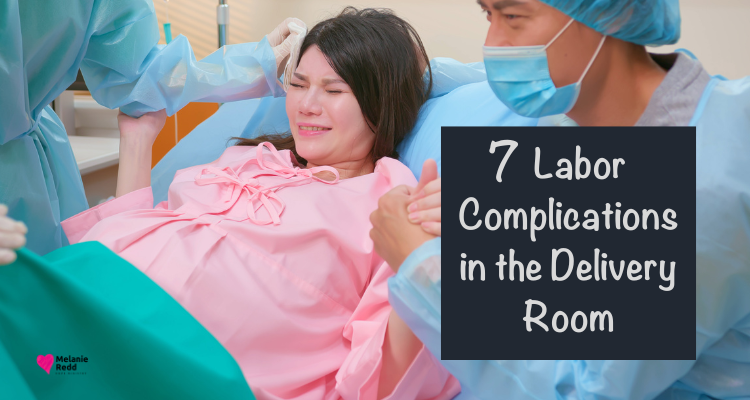7 Labor Complications in the Delivery Room

7 Labor Complications in the Delivery Room: What You Need to Know
When anticipating the arrival of a new baby, most expectant parents envision a smooth labor and delivery. However, complications can sometimes arise, which may alter these expectations. Understanding the potential challenges during labor is crucial for preparing expectant parents for various scenarios. This article aims to demystify the labor complications that can occur in the delivery room. This information will empower you with knowledge and prepare you for a safer birthing experience.
Understanding Labor Complications
Labor complications refer to any problems that might occur during childbirth, affecting either the mother or the baby. These complications can arise from a variety of factors including the baby’s position, the length of labor, and the mother’s health. While some women go through labor and delivery without any issues, a fair number might experience one or more complications. Being aware of these potential issues can help you feel more prepared and less anxious as your due date approaches.
First… Early Labor Challenges
Early labor, the initial phase of childbirth, can present its own set of challenges. Some women may experience prolonged early labor or a failure to progress as expected. In these cases, the role of experienced nurses, especially those enrolled in an RN to BSN online program, becomes invaluable.
Moreover, nurses with this advanced training have a deeper understanding of the physiological, psychological, and medical aspects of early labor. They are equipped to apply evidence-based practices to manage these early labor complications effectively. The online component of their education often emphasizes current best practices and allows nurses to learn from a diverse range of experiences and scenarios presented in their coursework, which they can apply in real-time situations. Their advanced skills ensure they can provide the necessary interventions, such as encouraging different labor positions, offering pain relief options, and closely monitoring the mother and baby’s health.
Second… Issues with the Baby’s Position
The position of the baby is crucial for the progression of labor. Complications can occur if the baby is not in the ideal position for birth, such as in cases of breech (feet first) or transverse (sideways) positions. These positions can make vaginal delivery difficult or impossible. In such situations, healthcare providers might attempt manual adjustments like the external cephalic version to turn the baby. If this isn’t successful, a cesarean delivery might be considered to ensure the safety of both the mother and the baby.
7 Labor Complications in the Delivery Room – Water Breaking Prematurely
The premature rupture of membranes (PROM) occurs when the amniotic sac breaks before labor begins. This can lead to several risks, including infection or increased risk of a premature birth.
If your water breaks prematurely, it’s essential to seek immediate medical attention. Medical professionals will guide you through the necessary steps, which might include waiting for natural labor to begin while monitoring for any signs of infection, or inducing labor if the situation demands.
Fourth… Complications from a Long Labor
A long labor, or labor that progresses more slowly than expected, can increase stress on both the mother and the baby. This scenario might lead to maternal exhaustion and fetal distress.
In such cases, medical interventions might be necessary to assist the progress of labor. These can include administering medications to strengthen contractions or, in some cases, opting for a cesarean delivery if other methods prove ineffective. Medical professionals will closely monitor vital signs and other indicators to make timely decisions that prioritize the health and safety of the mother and child.
Fifth… Managing Excessive Bleeding
Excessive bleeding, also known as postpartum hemorrhage, is a severe complication that can occur during or after childbirth. It typically involves losing more than 500 milliliters of blood after a vaginal birth or 1000 milliliters after a cesarean section.
Also, immediate action is crucial in managing this condition to prevent severe consequences. Medical staff are trained to quickly administer medications that encourage the uterus to contract and stop the bleeding.
In more severe cases, surgical interventions might be required. Educating yourself about the signs of excessive bleeding and understanding the urgency of treating it can significantly impact the outcomes positively.
7 Labor Complications in the Delivery Room – Dealing with High Blood Pressure
High blood pressure during labor, such as in the case of preeclampsia, poses significant risks to both the mother and the baby. Preeclampsia is characterized by high blood pressure and signs of damage to another organ system, most often the liver or kidneys. Symptoms may include severe headaches, blurred vision, and abdominal pain. Managing this condition typically involves careful monitoring and, often, medication to lower blood pressure.
In some cases, early delivery of the baby may be necessary to protect the health of the mother. Nurses and doctors work together to monitor these signs closely and provide the appropriate care to minimize risks.
Last… Emergency Situations: When to Perform a C-Section
A cesarean section (C-section) might become necessary if complications arise that make traditional vaginal delivery too risky. These situations can include prolonged labor, distress for the mother or baby, or issues like placenta previa, where the placenta covers the cervix. The decision to perform a C-section is typically made when it is deemed the safest option for both the mother and the baby. Understanding when and why a C-section might be necessary can help alleviate some of the anxiety associated with unexpected changes to birth plans.
Preparing for the Unexpected
Preparing for unexpected labor complications involves both gathering information and discussing potential scenarios with your healthcare provider. Expectant parents can benefit from childbirth education classes that cover various aspects of labor, including potential complications and their management. These classes also provide strategies for staying calm and making informed decisions, which can be crucial in a high-stress environment like the delivery room. Always communicate any concerns you might have with your healthcare provider and discuss your birth plan and any fears about
labor and delivery.
Conclusion – 7 Labor Complications in the Delivery Room
Understanding the potential complications that can occur during labor and delivery is key to preparing for the birth of your child. While it is natural to hope for a smooth delivery, being informed about the common issues and how they are managed can help reduce anxiety and enable you to make informed decisions. Remember, the healthcare team is highly trained and experienced in handling these situations and will do everything possible to ensure the safety and well-being of both you and your baby.
By having open lines of communication with your doctors and nurses, you can face the birthing process with confidence, knowing that you are prepared for whatever may come your way.
Were you encouraged by what you read?
Then, would you share this article with a friend, co-worker, or family member?
Or, maybe you can send it to a friend or family member?
This blog occasionally uses affiliate links and may contain affiliate links.
Additionally, Melanie Redd is a participant in the Amazon Services LLC Associates Program.
This is an affiliate advertising program designed to provide a means for sites to earn advertising fees. These are earned by advertising and linking to amazon.com.
Also, for more on my disclosure policy, click HERE.
© Melanie Redd and Hope Ministry, 2024. Unauthorized use and/or duplication of this material without express and written permission from this blog’s author and/or owner is strictly prohibited.
Further, excerpts and links may be used, provided that full and clear credit is given to Melanie Redd and Hope Ministry.
Please give appropriate and specific directions to the original content.






